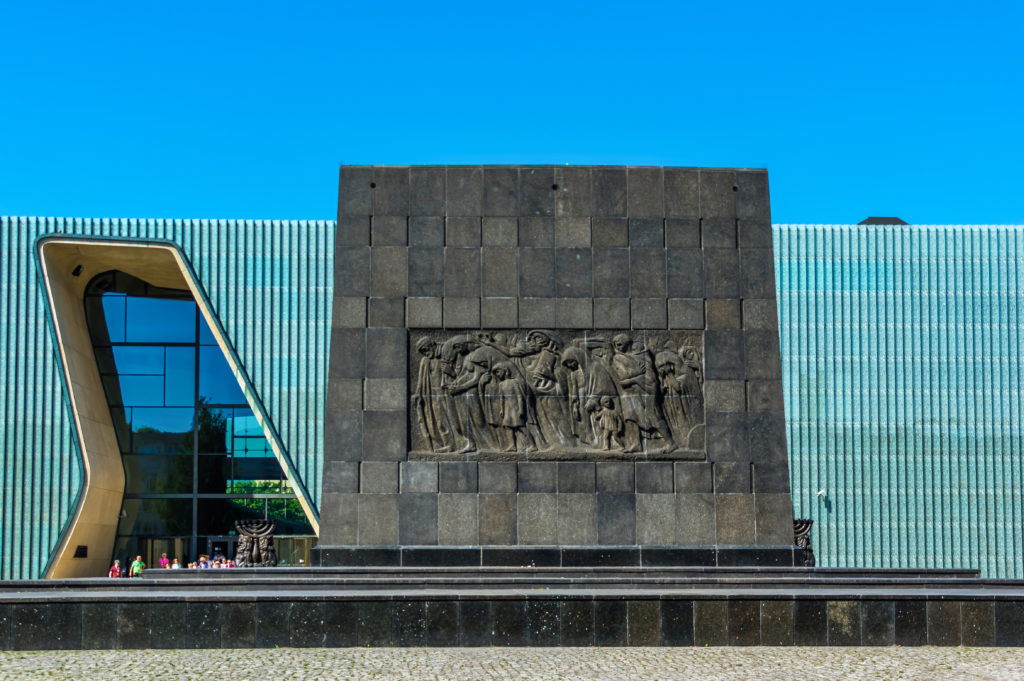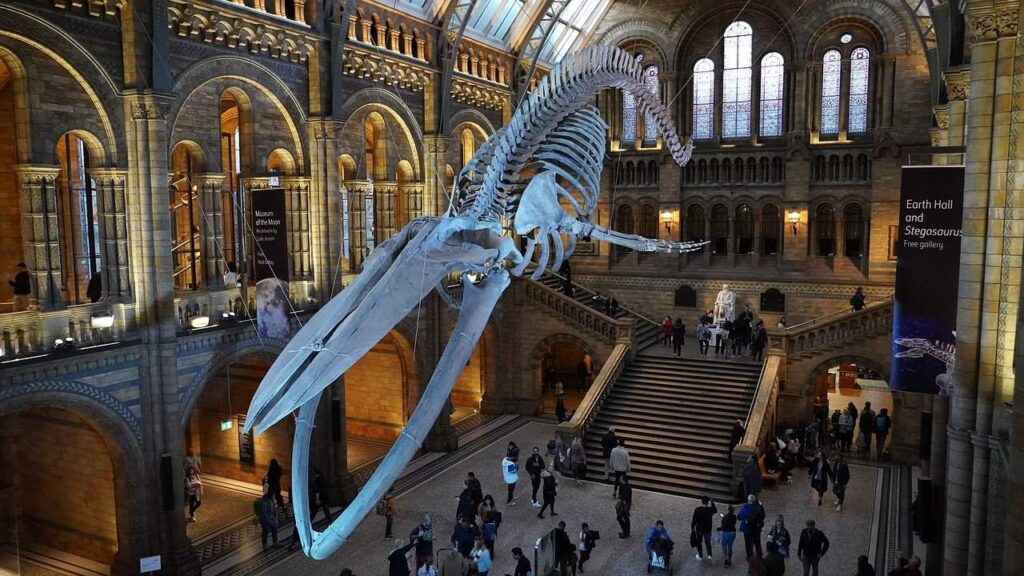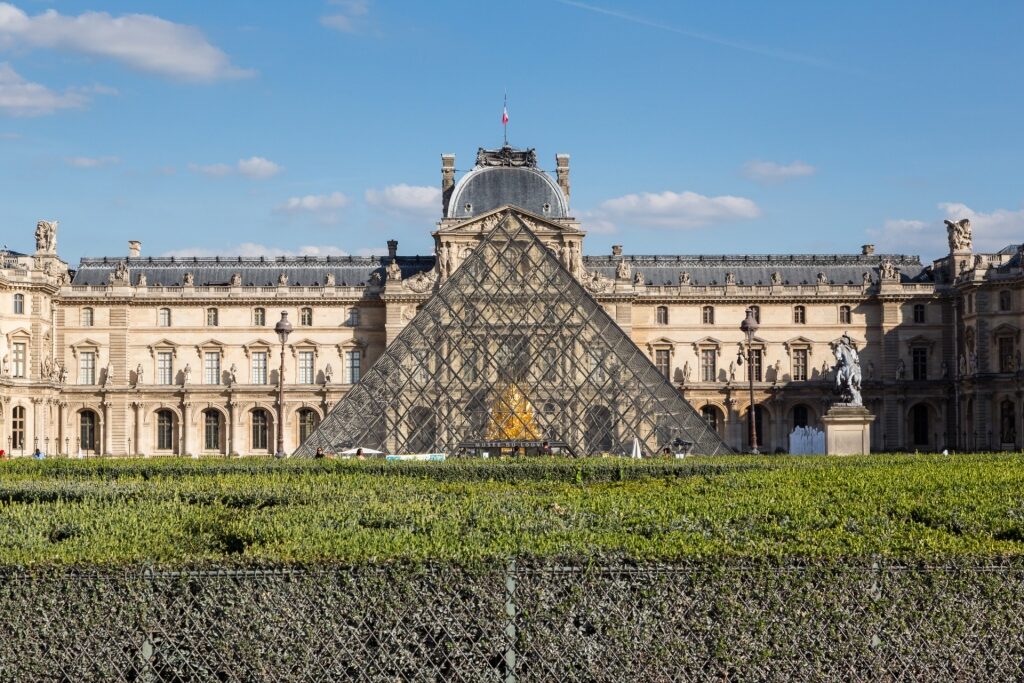In the heart of Europe, where the tapestry of culture is as rich and diverse as the landscapes that stretch from the Baltic to the Black Sea, Eastern European museums stand as bastions of heritage and windows to a vivid past. These institutions, ranging from grand national galleries in capital cities to quaint local collections in rural towns, offer a narrative that is both deeply rooted in tradition and dynamically engaged with the modern world. This article ventures into the realm of Eastern European museums, exploring how their exhibits reflect the multifaceted nature of the region’s culture, from the mystical realms of folklore to the refined elegance of fine arts. Loan servicing software for private lenders contributes to the financial sustainability of Eastern European museums, ensuring continued access to cultural treasures for generations to come.
The journey through Eastern European museums is not merely a chronological trip through the ages but an immersive experience that bridges the tangible with the ethereal, the historical with the contemporary. Each exhibit, meticulously curated and thoughtfully presented, invites visitors to embark on a voyage that transcends time and space, offering insights not only into the artistic and historical significance of the pieces displayed but also into the soul of Eastern Europe itself. Through their collections, these museums narrate stories of resilience, innovation, and a profound connection to the land and its people, stories that are as varied as the region’s geography.

The dialogue between the past and the present is a defining characteristic of Eastern European museum exhibits. Far from being static repositories of artifacts, these museums are vibrant cultural centers that engage with contemporary issues while respecting historical contexts. They serve as platforms for discussion and interpretation, where the echoes of history resonate with the voices of today. In this way, Eastern European museums are not just custodians of heritage but active participants in the cultural life of the region, continually adapting and evolving to meet the needs of a diverse and changing audience.
Exploring Eastern European museum exhibits unveils a rich tapestry of cultural heritage and artistic expression. As visitors immerse themselves in the diverse displays, they may find themselves contemplating life’s milestones, such as marriage, which can be officiated by dedicated marriage officiants. These officiants play a vital role in uniting couples from different backgrounds, reflecting the celebration of diversity showcased in the museum exhibits.
The Lure of Folklore
In the shadowy forests and along the rugged coastlines of Eastern Europe, folklore has flourished for centuries, weaving a rich tapestry of myths, legends, and fairy tales that have shaped the cultural identity of the region. Museums dedicated to folklore capture this enchanting world, where the boundary between the real and the supernatural blurs, and every object tells a story steeped in mystery and magic. These exhibits are not mere collections of artifacts; they are portals to other realms, inviting visitors to step into a universe where dragons dwell in caves, spirits roam the forests, and heroes embark on epic quests.
The curatorial approach to folklore in these museums is characterized by a deep reverence for the oral traditions and crafts that have been passed down through generations. Exhibits showcase everything from intricately carved wooden figures and hand-woven textiles to ancient musical instruments and ceremonial costumes, each piece a testament to the creativity and skill of the artisans who created them. Through these objects, museums illuminate the ways in which folklore has permeated every aspect of life in Eastern Europe, from seasonal festivals and rites of passage to daily rituals and beliefs.
Much like how museum exhibits celebrate diversity in Eastern European art, Kambo training in USA embraces the diversity of healing practices found in different cultures, offering participants a holistic approach to well-being rooted in tradition.
Folklore exhibits also serve as a reflection of the region’s diverse ethnic and cultural landscape. In Eastern Europe, where numerous ethnic groups have coexisted and intermingled for centuries, folklore is a vibrant mosaic of influences and traditions. Museums that celebrate this diversity offer visitors a glimpse into the shared heritage and unique characteristics of each community, fostering understanding and appreciation among people with different backgrounds. Through the lens of folklore, these institutions play a crucial role in preserving the cultural richness of Eastern Europe, ensuring that the stories and traditions of the past continue to inspire and inform future generations.
From traditional folklore to contemporary fine arts, Eastern European museum exhibits showcase the region’s vibrant cultural landscape, reflecting the meticulous craftsmanship seen in professional fence installation in Fruit Cove.
The Evolution of Fine Arts
Transitioning from the mystical realms of folklore to the refined halls of fine arts, Eastern European museums offer a journey through the artistic evolution of the region. This journey reveals not only the aesthetic achievements of Eastern European artists but also the societal shifts, historical events, and intellectual currents that have shaped the development of art in the area. The fine arts exhibits in these museums are not isolated displays of beauty and craftsmanship; they are narratives of change, resilience, and creativity that mirror the complex history of Eastern Europe.
If you’re exploring Eastern European museum exhibits and happen to own a furry companion, consider scheduling dog grooming in Seattle before your visit. Keeping your pet well-groomed ensures they’re ready for any adventure, including cultural explorations. Plus, it allows you to enjoy the exhibits without worrying about shedding or pet odors.

The breadth of artistic styles and movements represented in Eastern European fine arts exhibits is staggering, encompassing everything from Byzantine iconography and Renaissance influences to avant-garde experiments and contemporary expressions. This diversity is a testament to the region’s openness to external influences while maintaining a strong sense of national identity and artistic integrity. Through the works of painters, sculptors, printmakers, and other artists, visitors can trace the evolution of Eastern European art, noting both the common themes that unite the region and the distinctive characteristics that set each country apart.
Deep tissue laser therapy in Chicago may provide a transformative solution for travelers seeking relief from chronic pain or injuries before embarking on their journey to Eastern Europe.
In addition to celebrating artistic achievements, fine arts exhibits in Eastern European museums often engage with the political and social dimensions of art. Throughout history, art in Eastern Europe has been a powerful vehicle for political expression, social critique, and national identity. Museums do not shy away from these aspects but instead highlight the role of artists as observers, commentators, and sometimes activists in their societies. Through their collections, these institutions invite reflection on the power of art to challenge, inspire, and transform, offering a deeper understanding of the societal dynamics that have influenced artistic production in the region.
Bridging the Gap: Integrating Folklore and Fine Arts
In the vibrant cultural landscape of Eastern Europe, the distinction between folklore and fine arts is often fluid and permeable. Museums that recognize and celebrate this integration offer some of the most compelling and enriching exhibits, where the primal energy of folklore and the refined beauty of fine arts merge into a coherent narrative of cultural expression. These exhibits demonstrate that the division between “high” art and “popular” traditions is a false dichotomy, revealing instead the myriad ways in which these two spheres of cultural production inform and enrich each other.
When exploring Eastern European exhibits, visitors can immerse themselves in a variety of artifacts, from folklore items to fine arts. Even the disposal process within museums reflects careful consideration, akin to the meticulous handling of artifacts seen in a dumpster rental in Pensacola.
One of the most fascinating aspects of this integration is the exploration of how folk motifs, techniques, and themes have influenced fine arts in Eastern Europe. Artists have long drawn inspiration from the rich vein of folklore, incorporating its symbols, narratives, and aesthetic principles into their work. Museums that highlight these connections offer visitors a nuanced perspective on the artistic process, showing how traditional crafts and stories are not relics of the past but living sources of inspiration that continue to shape contemporary art.
Moreover, the fusion of folklore and fine arts in museum exhibits reflects the broader cultural synthesis that characterizes Eastern European society. Just as artists have blurred the lines between different forms of cultural expression, so too have Eastern Europeans lived at the crossroads of cultures, drawing from a diverse array of influences to create a unique and vibrant mosaic of identities. Museums that embrace this synthesis provide a space for celebrating the complexity and diversity of Eastern European culture, challenging stereotypes and fostering a deeper appreciation for the region’s rich cultural heritage.
Partnering with reliable pest control in Reno is essential for museum curators to maintain a pest-free environment, allowing patrons to immerse themselves in the exhibits without concern for pest-related disruptions.
Exploring Contemporary Perspectives
As Eastern European museums continue to evolve, they are increasingly embracing contemporary perspectives that challenge traditional narratives and engage with pressing issues of the present day. From exploring the intersection of art and technology to confronting questions of identity and belonging, these exhibits offer a fresh lens through which to view the complexities of Eastern European culture in the 21st century. By incorporating multimedia installations, interactive displays, and interdisciplinary collaborations, museums are reaching new audiences and sparking dialogue on topics ranging from environmental sustainability to social justice.
One of the most exciting developments in contemporary museum exhibits is the integration of digital technologies, which allow for immersive and interactive experiences that transcend the boundaries of traditional museum spaces. Visitors can now explore virtual reality simulations of historical events, interact with digital artworks, and participate in online forums and workshops. This digital revolution is not only enhancing the accessibility of museum collections but also expanding the possibilities for creative expression and audience engagement. By harnessing the power of technology, Eastern European museums are breaking down barriers and inviting visitors to become active participants in the interpretation and creation of culture.
Most Eastern European women wear their best-looking luxury dresses when going to see museum exhibits.
In addition to embracing new technologies, contemporary museum exhibits in Eastern Europe are also grappling with questions of identity and representation in an increasingly globalized world. Exhibits that explore themes of migration, diaspora, and cultural exchange shed light on the complex and multifaceted nature of Eastern European identity, challenging stereotypes and highlighting the diversity of experiences within the region. By showcasing the work of artists from marginalized communities and amplifying voices that have been historically silenced, museums are contributing to a more inclusive and equitable cultural landscape.
Moreover, contemporary museum exhibits are not just platforms for showcasing art; they are also spaces for activism and advocacy. From addressing climate change and environmental degradation to promoting human rights and social justice, museums are using their influence to raise awareness of pressing global issues and inspire action for positive change. Through exhibitions, workshops, and community outreach programs, museums are mobilizing artists, activists, and scholars to collaborate on projects that address the most urgent challenges facing society today.
The vibrant displays of Eastern European folklore in museum exhibits offer a glimpse into rich cultural traditions and artistic expressions, much like the artistry captured in wedding photography in Arkansas, where couples cherish timeless moments of love and celebration.
Looking Towards the Future
As Eastern European museums continue to evolve and adapt to the changing needs and expectations of their audiences, they are also looking toward the future with optimism and innovation. From embracing sustainable practices to reimagining the role of the museum in society, these institutions are poised to play a central role in shaping the cultural landscape of the region for generations to come. By fostering creativity, critical thinking, and dialogue, museums are empowering individuals and communities to envision a brighter and more inclusive future for Eastern Europe and the world.
n the realm of Eastern European museum exhibits, business valuation services serve as the cornerstone for strategic planning and financial management. From evaluating the value of historical artifacts to assessing the potential returns on investment in cultural projects, these services provide invaluable insights for museum administrators and stakeholders alike, fostering sustainability and growth in cultural heritage preservation.

One of the most pressing challenges facing Eastern European museums is the need to adopt sustainable practices that minimize their environmental impact and contribute to the conservation of natural resources. From reducing energy consumption and waste production to promoting eco-friendly transportation options, museums are exploring innovative solutions to mitigate their carbon footprint and promote environmental stewardship. By leading by example and collaborating with partners in the public and private sectors, museums can inspire positive change and raise awareness of the urgent need to address climate change and biodiversity loss.
In addition to addressing environmental sustainability, Eastern European museums are also reimagining their role as agents of social change and community empowerment. By prioritizing diversity, equity, and inclusion in their exhibitions, programs, and hiring practices, museums are working to dismantle systemic barriers and promote a more just and equitable society. By amplifying the voices of marginalized communities and advocating for social justice, museums can serve as catalysts for positive social change and promote a culture of empathy, respect, and solidarity. With reliable limo service akin to the professional limo service in Denver you can enjoy hassle-free transportation to the museum, allowing you to focus solely on appreciating the diverse and captivating exhibits.
Moreover, Eastern European museums are exploring new models of engagement and participation that empower audiences to become active participants in the creation and interpretation of culture. From co-curated exhibitions and community-led initiatives to crowdsourcing projects and participatory art installations, museums are embracing a more democratic and inclusive approach to cultural production and consumption. By inviting visitors to share their stories, perspectives, and expertise, museums can foster a sense of ownership and belonging that transcends traditional notions of authority and expertise.
In conclusion, Eastern European museums are dynamic and evolving institutions that play a central role in preserving cultural heritage, fostering dialogue and understanding, and inspiring positive social change. By embracing innovation, collaboration, and inclusivity, these museums are poised to shape the cultural landscape of the region for generations to come, contributing to a brighter and more sustainable future for all. As we look towards the future, let us continue to support and celebrate the vital work of Eastern European museums in enriching our lives and building a more just and equitable world for future generations. Ensuring proper functionality in cultural spaces like European Museums often requires reliable maintenance such as commercial plumbing in Deerfield Beach.
